Biopsychology Uark
1/21
Earn XP
Description and Tags
Josiah
Name | Mastery | Learn | Test | Matching | Spaced |
|---|
No study sessions yet.
22 Terms
Words to describe planes of the brain
Sagittal, Coronal, Axial
Words to describe position in anatomy
Inferior, Superior (ventral, dorsal), medial, lateral, posterior, anterior
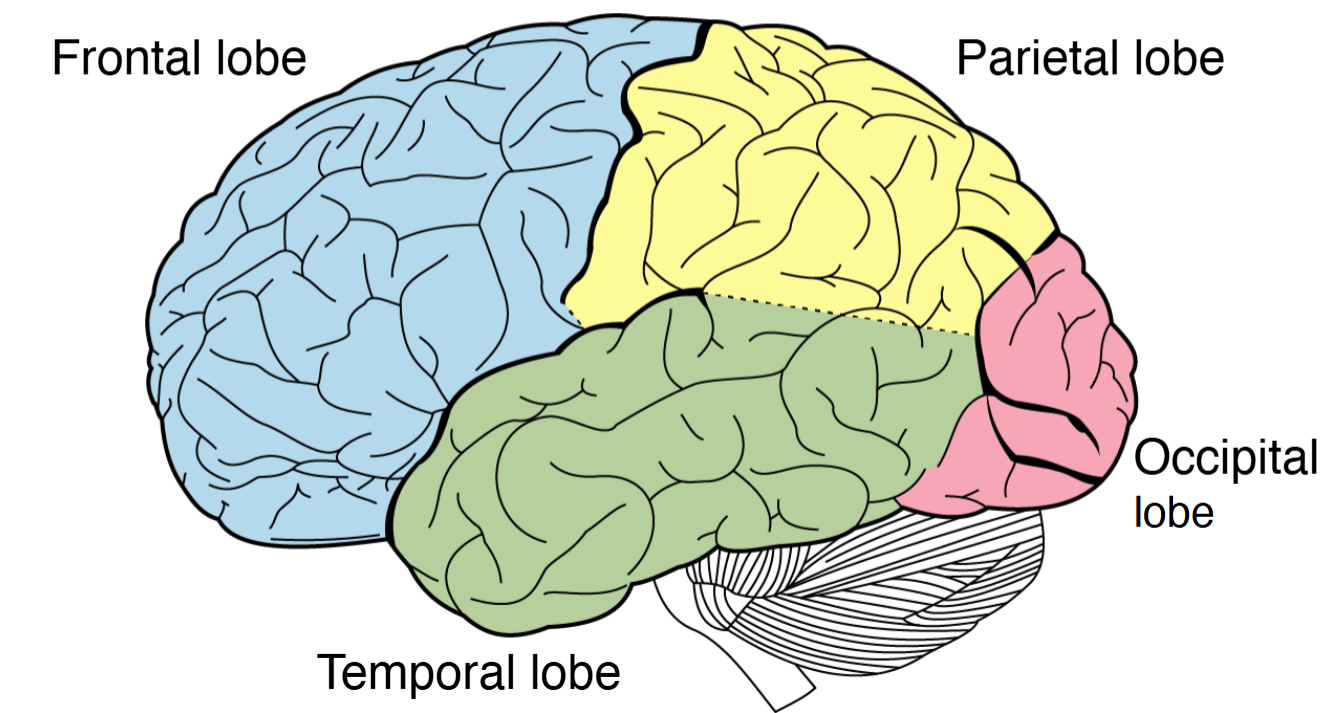
Lobes of the brain
Frontal, parietal, temporal, occipital
Gyrus (gyri for plural)
folds of the brain
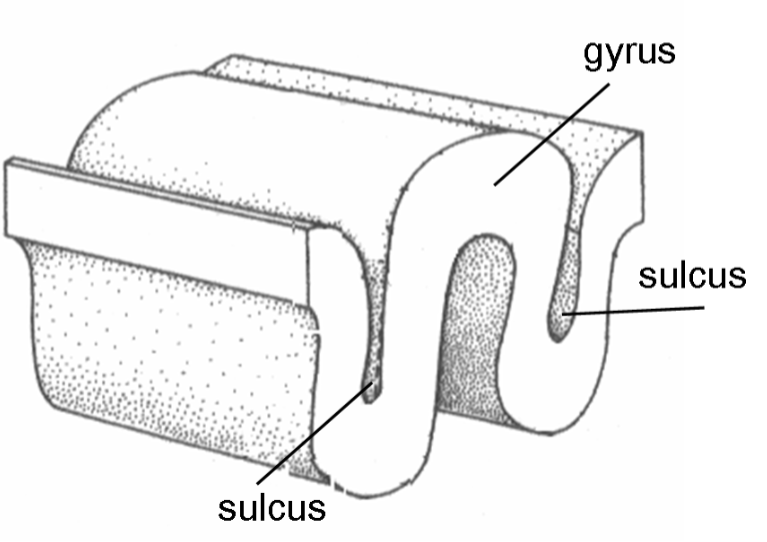
Sulcus (sulci for plural):
gaps between the folds
Gray matter:
outer layer of neurons ("cortex" = Latin for "bark")
White matter:
myelinated axons and support cells ("glia" =
Latin for "glue")
Meninges:
layers of tissue wrapped around gray matter. Pia mater, Arachnoid, Dura Mater
CerebroSpinal Fluid (CSF)
• Clear liquid between the arachnoid layer and pia mater
• Created by the choroid plexus in the ventricles
• Provides nutrients, removes waste, cushions brain
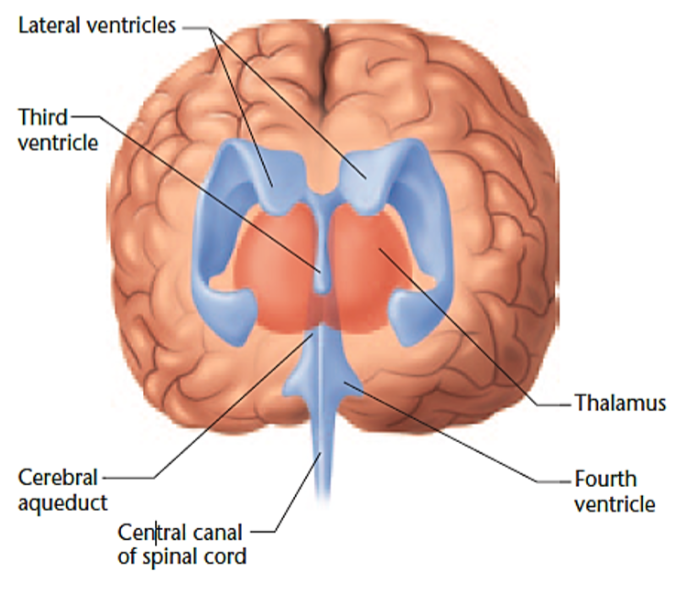
Ventricular system
CSF flows between the 4 ventricles in the brain and down the
spinal cord
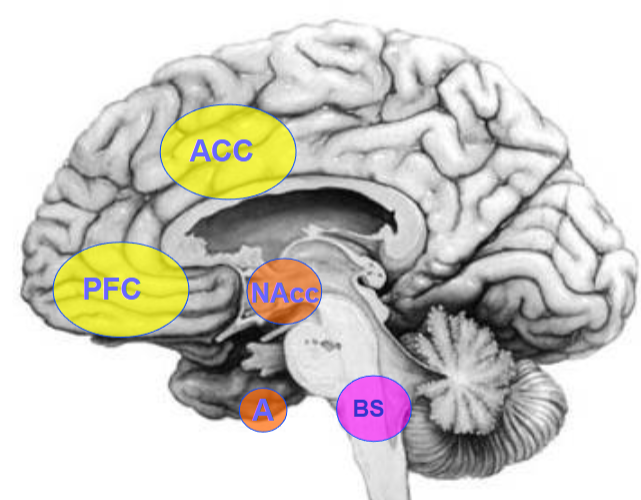
Neuroanatomy (mid-sagittal view)
• Amygdala (A; Amy; Amyg)
• Anterior Cingulate Cortex (ACC)
• Brainstem (BS)
• Nucleus Accumbens (NAcc)
• PreFrontal Cortex (PFC)
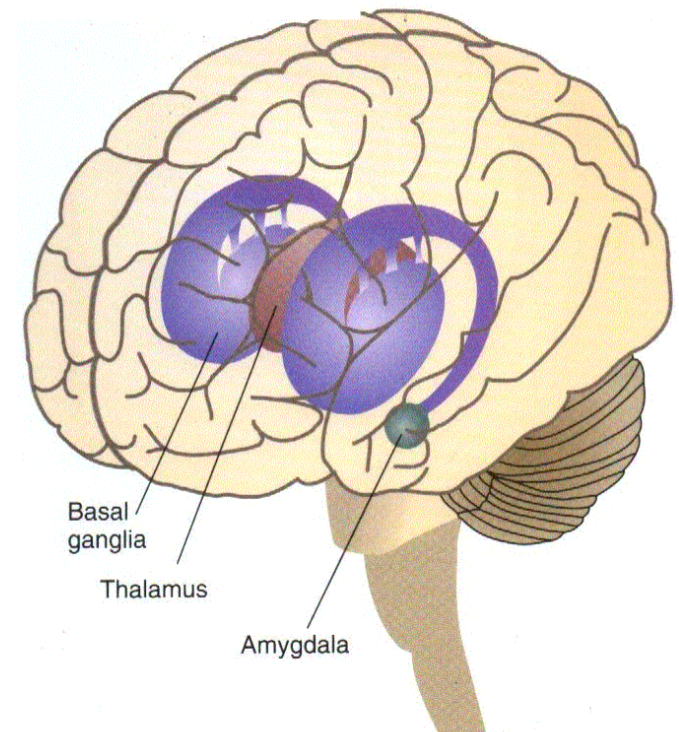
Neuroanatomy (sub-cortical circuits)
• Basal ganglia (motor control and more)
• Thalamus "relay station"
-routes signals from sense organs to cortex, and more
Hippocampus (Greek for seahorse):
marks engrams for memory storage and retrieval
Amygdala (Latin for almond):
- not the "fear center"
- detects salient (a.k.a. important) things
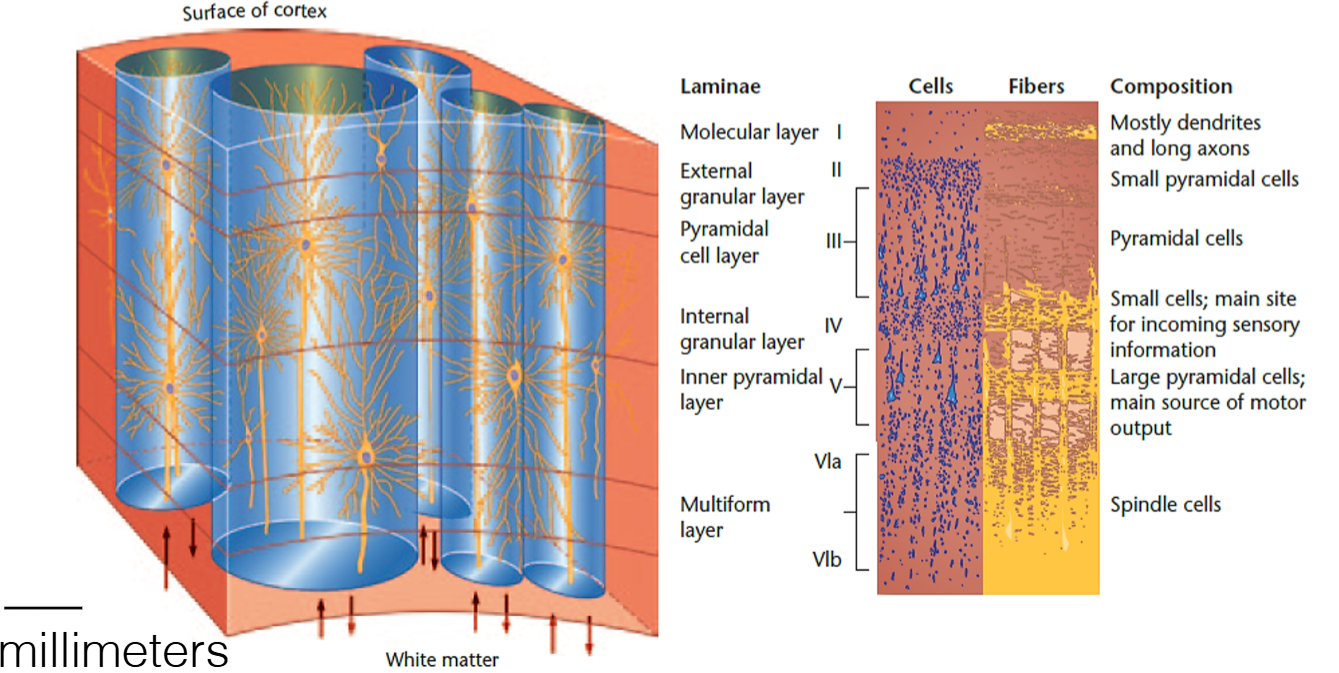
How are neurons organized in gray matter
Neurons are organized in columns and layers ("laminae")
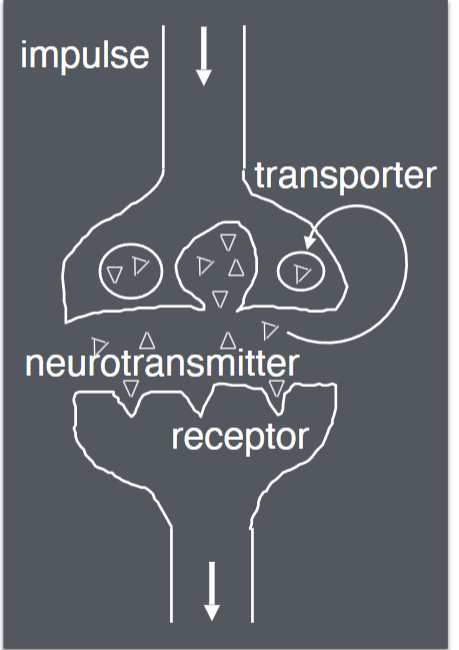
Neurotransmission:
• Action potential causes presynaptic neurotransmitter release
• Neurotransmitters fit receptors
• Generates postsynaptic impulse
• Transporters re-uptake presynaptic neurotransmitters
Neuromodulators (special neurotransmitters):
• Dopamine, norepinephrine / adrenaline, serotonin, acetylcholine, etc
Mesolimbic dopamine system
The ventral tegmental area (VTA) produces the neuromodulator dopamine, and releases it to the Nucleus Accumbens (NAcc) and Medial PreFrontal Cortex (MPFC)
Somatic nervous system
• body movement
-voluntary part of the peripheral nervous system, controlling conscious movements of skeletal muscles and processing sensory information from skin, muscles, and joints, including touch, sound, taste, and smell
Autonomic nervous system
• things we can't control
-a component of the peripheral nervous system that regulates involuntary physiologic processes including heart rate, blood pressure, respiration, digestion, and sexual arousal.
Autonomic nervous system is broken up in what three ways:
• Sympathetic nervous system (“fight-or-flight”)
• Parasympathetic nervous system (“rest-and-digest”)
• Enteric nervous system (gut talking to brain)
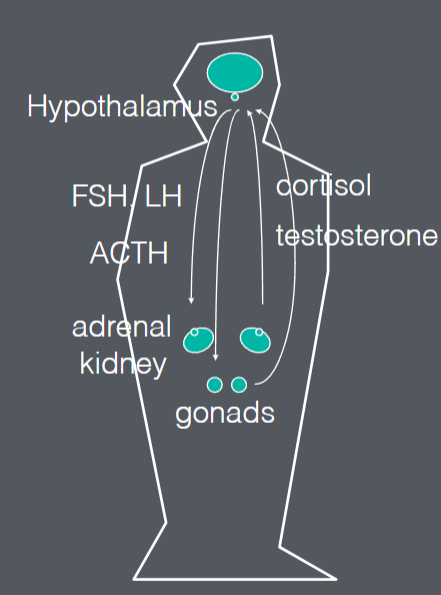
Hormones
Hypothalamus talks to pituitary gland
• Pituitary gland releases trophic factors in blood
• Trophic factors reach peripheral glands
• Peripheral glands release hormones
• Feedback to brain